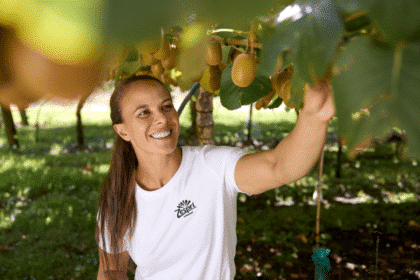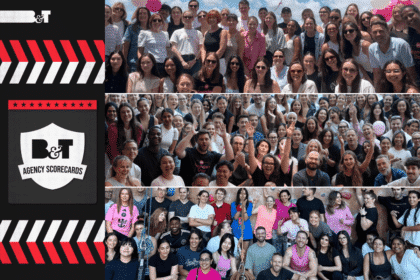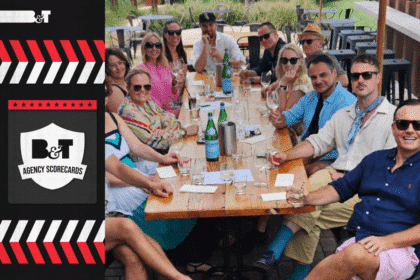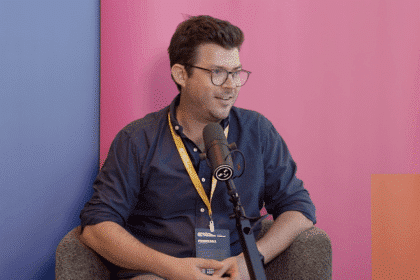In this guest post, Jessica Miles (feature image), ANZ Country Manager at Integral Ad Science discusses the power and potential of digital out-of-home advertising powered by programmatic…
The advertising industry has had a rough 2020 and one would assume that outdoor would’ve felt the full force of it. However, according to the recent eMarketer report, digital out-of-home (DOOH) ad spending is expected to increase by 1.6 per cent this year, and in 2021 expected to rise by 19.2 per cent.
The report expects DOOH ad spending to increase from $2.72 billion in 2020 to $3.84 billion in 2023. Out-of-home (OOH), while resilient, is also an industry that continues to push for more. More ad dollars, more creative campaigns, and more effective ways to communicate with consumers. Australian digital out-of-home (DOOH) advertising has the potential to drive growth into the future.
PwC Entertainment and Media Outlook predict the total out-of-home advertising market in Australia to grow at a CAGR of 8 per cent from 2019 to 2023.
Previously Out- of- Home (OOH) was a primarily static billboard and it limited the amount of supply in the market to the numbers of physical assets that existed with limitations on creatives that could be used, which were primarily vinyl. DOOH solves those key challenges. You can take a location and now rotate the ads of multiple advertisers.
Now one location can facilitate 6 ads a minute, potentially, and each advertiser gets sufficient exposure time to the audience that’s passing by and a lot more advertisers can be put through the same asset. DOOH can incorporate things like video, augmented reality, it can be interactive, and it can now trade like other digital channels. So you can buy different audiences where there’s a high propensity of them, you can buy time of day, day of the week. With so many permutations on the form, including an infinite number of inventory locations, screen types, and interactive modes. DOOH is positioned to become a huge component in many campaigns.
DOOH will see the arrival of programmatic at scale
The ability to purchase DOOH programmatically alongside Online, TV, and even Radio will undoubtedly bring new advertisers and bigger budgets to space. Programmatic digital out-of-home (pDOOH) makes OOH more accessible, flexible, and easier to buy than ever before. It allows advertisers to be more creative and targeted in their approach by only bidding on the impressions that are relevant to them. It enables digital media buyers to set what audience they want to reach, the environments in which their ads should play, and other conditions that matter to campaign weather, temperature, time of day etc. When the conditions of the campaign are met, the transaction automatically takes place and the ad displays on the screen. Whether it’s to display an umbrella ad on a rainy day, a suncreen ad when the temperature shoots 35 degrees or above, Day specific promotions, local sports wins etc. While DOOH made this sort of thing possible some time ago, programmatic enables it at an unprecedented speed and scale.
At a time when the situation is fluid and consumer behaviours are changing, evolving constantly the importance of agility cannot be overemphasised. Programmatic technology enables buyers to be more agile by pivoting towards and even optimising their campaigns with short notice. pDOOH now allows for a more tactical layer of DOOH and can now be in sync with other digital channels delivering to the same specific audiences, and their strategic reason for being on the channel plan in the first place.
OOH publishers have seen a shift from selling screens and panels to the idea of selling experiences to audiences. Once considered an unaccountable medium, data has greatly improved the accuracy & accountability of campaign planning, delivery & evaluation in OOH. Programmatic has played a significant role in driving this transition.
Verification will allow advertisers to buy ‘Quality’ DOOH inventory
The dynamic and contextual nature of digital out of home increases the possibility of incorrect ad delivery which makes third-party verification critical to the success of the medium. One of the biggest challenges we face as an industry is the lack of a standard currency when it comes to measuring OOH audiences. TV has OzTAM and Radio has GfK, whereas OOH’s measurement comes from a range of sources. The OOH data is robust & reliable and it’s certainly something which buyers should keep in mind. With advertisers booking multi-geography, contextual creative on DOOH, it’s important that those plays are measured and verified to know for a fact it ran as per the agreement. For eg. If a brand wants to run a 10-sec sunblock creative of SPF 30 in Brisbane when the temperatures touched 32°C and run a waterproof sunblock creative of SPF 50 for 15 sec when temperatures soared to 35°C in Gold coast, how would the advertisers know if the relevant ads kicked in during specific temperatures and in the right geographies and for the right duration?
Having a third party focused on verifying and measuring these specifics will become key. Additionally, measuring quality will enable advertisers to buy quality inventory, differentiating from some of the excess supply in the market-leading to price stability.
Only time will tell
The concept of ‘exposure time’ is becoming important in digital online and people are transferring that to the digital out-of-home space with the primary concern of how long an ad is in view. Third-party verification can help provide detailed reporting on those parameters. Third-party verification partners can help verify
· Was delivery reflective of what was bought?
· Did the contextual ads run in the right geography?
· How many times did the ads run?
· Did the ads run at the right time?
· Did the ads run for the duration it was booked for?
The potential of DOOH is unlimited and is all set to grab increased marketing spends and we’re seeing channel partners, agencies, and brands increasingly working together with verification partners to help measure and verify their plays. This collective collaboration will enable the medium to thrive and grow to its full potential without transparency challenges clouding digital advertising. DOOH is an exciting medium to watch as it continues to integrate it’s forms of media, connecting with consumers and will no longer be a niche specialty in Marketing and programmatic will make it a must-have for all.








